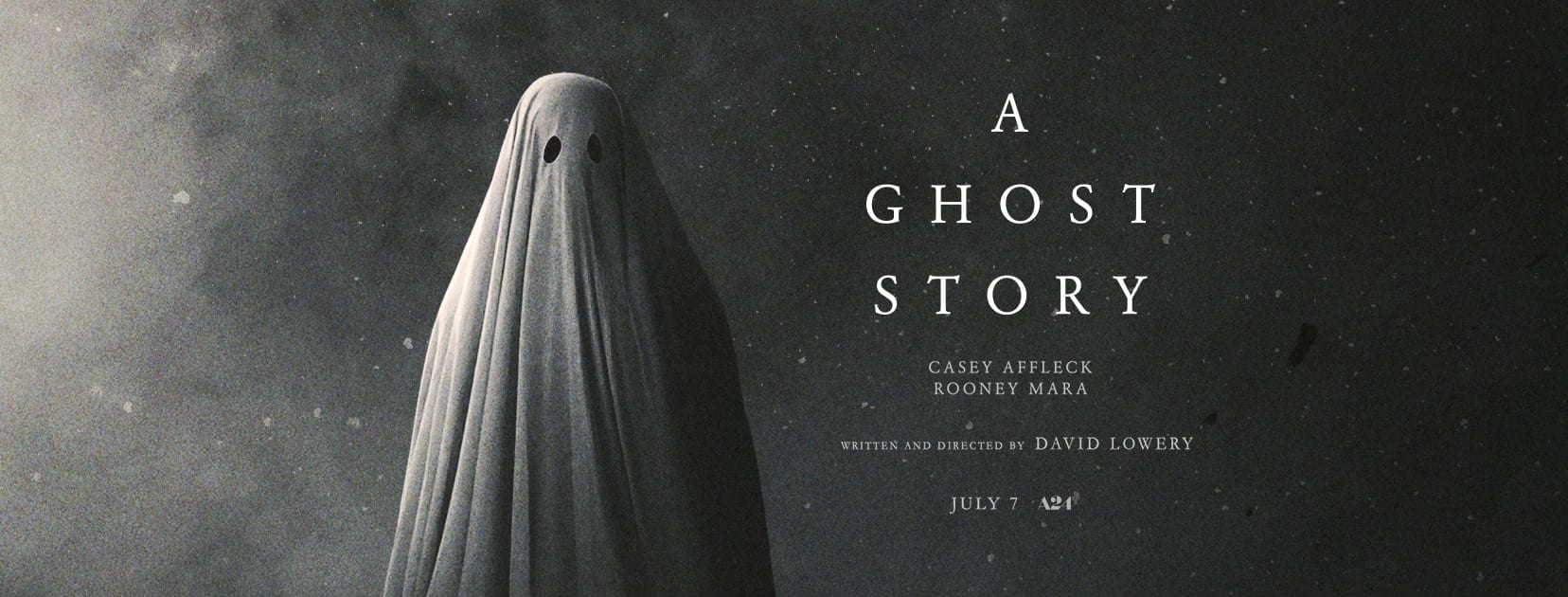A Ghost Story is a film written and directed by David Lowery (fresh off the back of Disney’s live action remake of Pete’s Dragon, which itself received light-favourable reviews). It stars Casey Affleck and Rooney Mara, and is a silenced and poetic arthouse film, which follows our main protagonist ‘C’ (Affleck) who dies, and returns back to the physical world in the shape of a children’s Hall0ween ghost sheet. As the film progresses, we follow ‘C’ on this existential, pragmatic journey into his past and future, whilst we’re watching him try to dismantle the meaning of his life, and ultimately find out, with him, what he’s actually searching for after death.
A rollercoaster of emotions and broken boundaries
The film could have got very stale, very quickly with its lack of dialogue (with only around 10 lines from our main protagonists and a monologue in the latter half of the film). But it’s a testament to Lowery’s writing and direction which keeps the piece flowing, always pushing the perimeter of C’s agenda. He effectively has made one of the most enduring and emotional pieces of cinema that I have seen this year.
Dealing with themes of death, grief and time, the film carries an emotional weight which in turn can place a burden on the audience, but not necessarily in a negative way. It amplifies the idea of psychological endurance and after life. The long, lingering scenes (such as solo Mara ‘Pie Scene’) is purposely there to make the audience feel as uncomfortable as the character M is supposed to be feeling – this scene goes on for around 4 minutes in silence with only one visible cut for perspective – forcing the view to not break contact with the screen.
An unorthodox technical marvel
This film isn’t going to be for everyone though, there is an overuse of visual storytelling with undertones of ambiguity which leaves a lot of room in the picture for the viewer to create their own meaning. Do not go into the film with the expectation of a pure paranormal/horror phenomenon. However, there are clear influence of the horror genre enthused throughout the film. Most notably coming in homage to John Carpenter’s, 80s style synths through the immaculate score (composed by Daniel Hart). Several cliches, such as unconventional jump scares (being in mundane scenes) are there to break up the silence and tension the film has created for it’s self.
Speaking of silence, that along with the score is probably the main thing what made me resonate with film during and after being in the cinema. It utilises its music as a character, only being used when appropriately needed. It handles scenes with only diegetic sound confidently, without forcing the film to become bland or boring. The use of the Instagram-like vignette (straying from the standardised hollywood aspect ratio 1.37:1 to the smaller, compact 1.33:1), personifies itself perfectly to capture the tight framing of close-up shots to make the film feel more close to the view. The framing and cinematography (Andrew Droz Palermo) is simply stunning, with every single shot looking like a watercolour painting.
The Verdict
My only flaw with the film is during the middle and the third act, when the screenplay and story looses what it originally set out to do, a close up following of C, watching M cope and trying to find semblance with that – instead of trying to find the full meaning of life, something I imagine would be quite hard to achieve in 30 minutes of cinema. Even though I find it satisfying, I can see that some people might eventually get tired and bored with the style of art cinema that the film adheres to – even some arguing the lack of substance, which could eclipse the films deep subject matter. Some of the stylistic choices could, in other eyes be called pretentious.
Overall, the film for me was outstanding, and the way it was shot gave me a high satisfaction as a lover of cinema. This is one for the Blu-ray collection.
Rating: 9/10
Words by Drew Wilson
